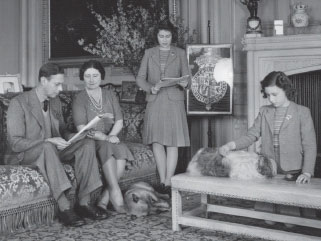Bonzo's War (46 page)
Authors: Clare Campbell

p. 324
âI consider we should â¦' (TNA ADM 1/20854).
p. 324
âFor Valour' (TNA WO 32/14999).
p. 324
âblown up â¦' (TNA WO 32/14999).
p. 325
âtaking random bites â¦' (TNA WO 32/14999).
p. 325
ânative thieves â¦' (TNA WO 32/14999).
p. 325
âNow that hostilities â¦'
RAVC Journal
, November 1946 (
pp. 20â21
).
p. 325
âfailed to recognise him' ibid. (
p. 11
).
p. 326
âMichael, on hearing â¦' (
http://www.animalaid.org.uk/images/pdf/michael.pdf
).
p. 328
âKhan was the one â¦' Rosamond Young, âFriends in Arms' in
Chicken Soup for the Dog and Cat Lover's Soul
(ed. John T. Canfield), Health Communications Inc., FL 1999 (
p. 18
).
p. 328
âWhile the Archbishop held â¦' (
http://www.purr-n-fur.org.uk/famous/faith.html
).
p. 329
âreason was largely political â¦' (TNA MAF 79/10).
p. 329
âfine, fat fox â¦'
Horse & Hound
, 15 December 1944 (
p. 7
).
p. 329
âThe Earl of Harrington â¦'
Baily's Hunting Directory 1939â1949
(
p. 36
).
p. 330
âmost pro-Nazi â¦' Clabby, op. cit (
p. 157
).
See also
TNA FO 937/103.
p. 331
âthe animals, few and far â¦'
The Times
, 8 January 1946 (p. 2).
p. 331
âacorns collected â¦' (TNA FO 943/856).
p. 333
âlittle is known â¦' âBravest Cat Dead',
The Times
, 1 October 1948 (p. 2).
p. 333
âHitler', âTimoshenko' â¦'
The Times
, 9 May 1955 (
p. 12
).
p. 333
âchose not to emphasise â¦' Hilda Kean (eds. Emilie Dardenne and Sophie Mesplede),
The People's War on the British Home Front: The Challenge of the Human-Animal Relationship in a Nation of Animal Lovers
, Manchester University Press, 2013.
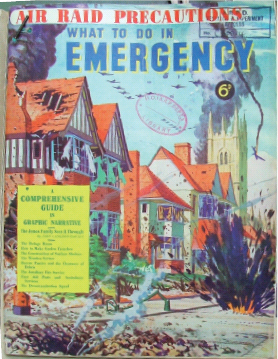
The National Archives

Getty Images
Fear of a devastating mass attack on Britain's cities at the outbreak of war drove Government policy on Air Raid Protection. Would pets go barking mad at the first wail of a siren? All sorts of âgas-proof' containers were touted
(above)
while in early 1939 Mr. Harold Bywater
(left
, with friend), chief municipal vet of West Ham in East London, devised a pilot protection scheme for the dockland borough's many thousands of domestic pets and working animals.
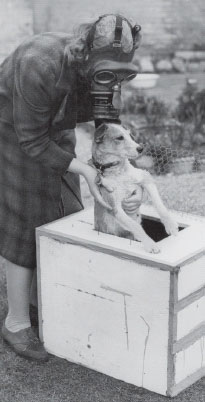
State Library of Victoria
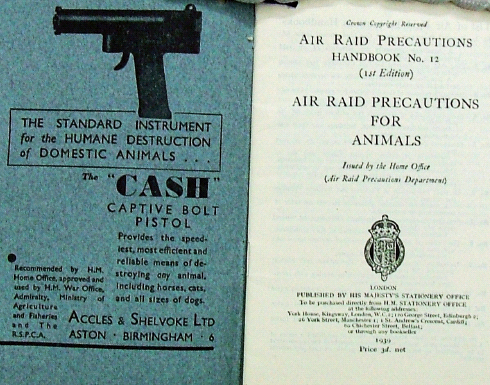
The National Archives
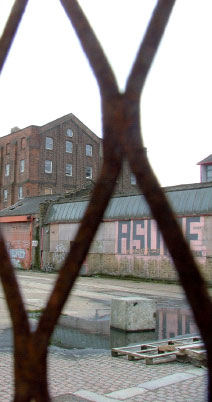
Christy Campbell
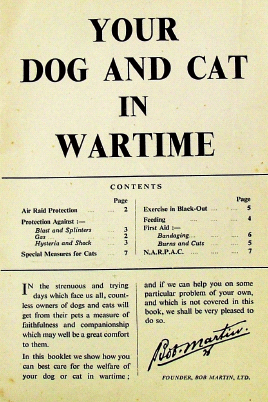
Wandsworth Heritage Service
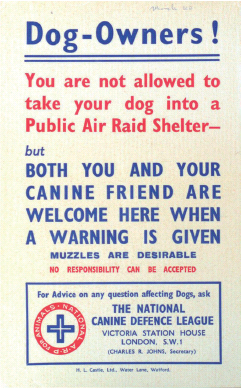
Sussex University Mass Observation Archive
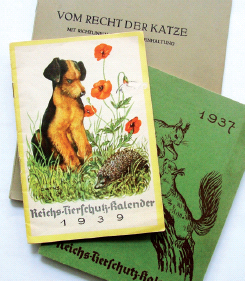
Christy Campbell
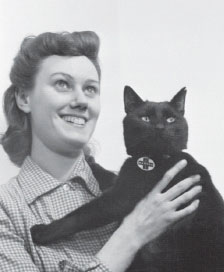
Imperial War Museum
The announcement of the existence of NARPAC (the National Air Raid Precautions Animals Committee) on the eve of war did little to reassure pet owners who had been officially advised in Home Office ARP Handbook No. 12
(opposite, top)
that to have their animals destroyed was the âkindest thing to do.'
The rendering company, Harrison, Barber & Co. of Sugar House Lane, West Ham
(opposite, left
, its yard today part of a huge post-Olympic regeneration site), was overwhelmed by the massacre of more than 750,000 pets. The Bob Martin pet health company
(opposite, right)
and the National Canine Defence League (
above left)
advised very differently â while NARPAC's registration scheme offered some semi-official comfort that pets could survive. Here, in an early 1941 image, wartime housewife Mrs. Olive Day
(above right)
shows off her delightful black cat, âLittle One,' with NARPAC collar.
German pets found protection in the Reich Animal Defence League
(above)
while cats found a champion in Prof. Friedrich Schwangart's 1937 book
On the Rights of Cats
against charges of being âpoachers.' They were âhygienic helpers' in the war on mice, said the Professor.
Pedigrees and mongrels alike were caught in the great killing panic of 1939 but, to begin with, posh pets had a better chance of survival. The Royal corgis were evacuated to Windsor where they had a cottage in the Great Park.
Fashionable stores promoted luminous blackout jerkins for dogs
(right)
, while an opportunist breeder exhorted owners âto carry a white Pekingese' to avoid accidents on the darkened streets.
